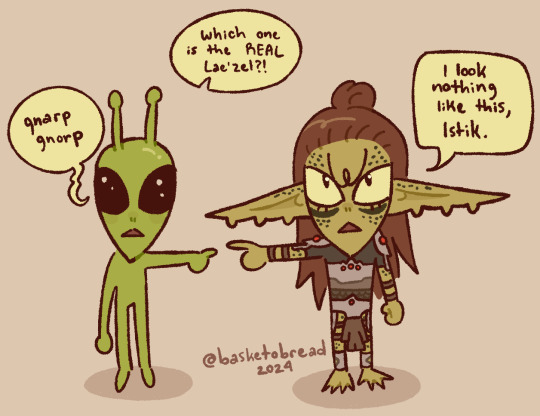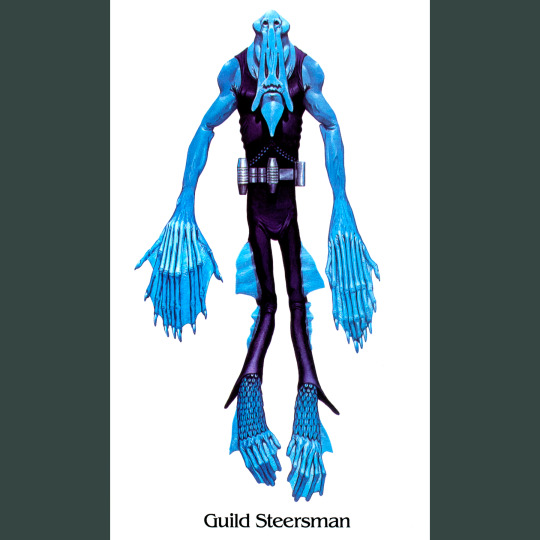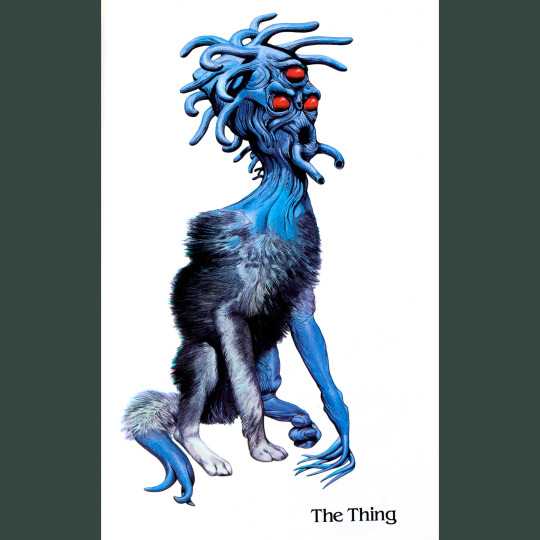#d&d
Text

place your votes, chat
#FINALLY BG3 BASKETOBREAD ART ONCE AGAIN#i missed drawing lae'zel sooo much#hopefully i can draw some more bg3 cast + oc content cuz i feel like im slowly leaving this artblock LOL#bg3#baldur's gate 3#lae'zel#bg3 lae'zel#lae'zel of k'liir#bg3 art#baldur's gate 3 art#dnd#dnd art#d&d#d&d art#bob the artist
1K notes
·
View notes
Text
649 notes
·
View notes
Text

Commission!
526 notes
·
View notes
Text
Monster who eats your backstory.
It bites you and you've now sprang into being just now ex nihilo
313 notes
·
View notes
Text

First contact, or a miscommunication about which miniatures you were supposed to bring to tonight's game (John Karp, The Space Gamer 17, May-June 1978)
#The Space Gamer#John Karp#wargaming#sci fi#D&D#Dungeons & Dragons#dnd#gaming humor#RPG#Space Gamer#spaceship#rocket ship#first contact#mismatch
260 notes
·
View notes
Text
If history repeats this will get no love but my WIP will continue to be rather popular but what are you gonna do? Aaaaanyways, here’s a finished Ankarna. I’m thinking that the harvesty crown might be better for an autumn deity but Brennan did she she was the goddess of Summer, justice AND harvest so there it is.

#dimension 20#fantasy high#dimension 20 fantasy high#fantasy high junior year#fhjy#d20 fantasy high#dnd#d&d#ankarna
335 notes
·
View notes
Text

daeron thatcher's two moods 🗡️🥰
(my half-drow bard)
237 notes
·
View notes
Photo

⚔️ 𝗡𝗲𝘄 𝗶𝘁𝗲𝗺! Battlechef’s Heated Skillet
Weapon (mace), rare ___ This iron skillet is magically light and wieldy in your grasp, allowing you to swing it as a weapon. You gain a +1 bonus to attack and damage rolls made with this magic weapon. If you’re proficient with cook’s utensils, you’re proficient with the “battlechef’s heated skillet.” The skillet has 3 charges and regains all expended charges whenever you spend at least 1 hour cooking with it, which can be done over the course of a short rest. The first creature to eat a meal that was cooked in the skillet gains 5 temporary hit points. When you make an attack with the weapon, you can speak one of its three command words to expend 1 or more of its charges: “hot” (1 charge), “hotter” (2 charges), or “hottest” (3 charges). If the attack hits, the target takes an extra 1d6 fire damage for each expended charge. ___ ✨ Patrons get huge perks! Access this and hundreds of other item cards, art files, and compendium entries when you support The Griffon's Saddlebag on Patreon for less than $10 a month!
274 notes
·
View notes
Note
I'm asking you because I've seen people ask you similar questions before. Why are kobolds, as a fantasy creature, so nebulous?
Generally when people say orc, goblin, elf, dwarf, werewolf, vampire etc. a person can have a pretty solid idea of what traits that animal will have. I guess because they're usually copying that species from the same similar source works?
What happened to kobolds? I used to know them as a kind of german folklore creature, but then also as a short lizard person, and most recently there's been Dungeon Meshi, which gives the name kobold to anthropomorphic dogs.
Well, the trick is that none of these terms have a standard definition. In folklore, the words "elf", "dwarf", "gnome", "troll", "goblin", "pixie", etc. are used more or less interchangeably – all of these words might refer to the exact same folkloric critter, and conversely, the same word might be used to refer to several completely different folkloric critters, even within the same body of regional folklore, to say nothing of how their usage varies across different regions and over time.
Literally the only reason any of these terms have "standard" definitions in modern popular culture is because one specific piece of media got mega-popular and everybody copied it. For example, Tolkien is responsible not only for the popular media stereotypes of elves and dwarves: he's responsible for popularising the idea that "elf" and "dwarf" are separate kinds of creatures to begin with. Similarly, while Bram Stoker's Dracula isn't solely responsible for cementing the idea of what a vampire is in popular culture, it did standardise what vampire magic can do, and it helped cement the idea that a "vampire" and a "werewolf" are different beasties, which hasn't always been the case.
So the short answer is that there's just never been a mega-popular work about "kobolds" to provide a standard template for the type. Most modern depictions in Anglophone popular culture ultimately point back to the interpretation set forth by Dungeons & Dragons, but D&D itself has gone back and forth on the whether they're tiny dog-people or tiny lizard-people, with the tiny dog-person version being the earlier of the two, so even folks who are directly cribbing from D&D will vary on this point depending on which particular edition they're name-checking.
#media#tropes#folklore#popular culture#kobolds#gaming#tabletop roleplaying#tabletop rpgs#dungeons & dragons#d&d
212 notes
·
View notes
Text





Barlowe's Guide to Extraterrestrials (1979) is a fun little book that looks at aliens from a variety of science fiction stories through the (slightly) in-universe framing of a field guide, complete with notes on ecology and biological functions.
Artist Wayne Barlowe’s selections are an interesting cross-section of the genre (I don’t recognize a lot of them, honestly) and his interpretations (of the ones I do recognize) always walk the fine line between capturing something essential that I pictured in my mind’s eye while also being surprising or unexpected in many ways. Among the beasties I did not photograph are the Overlords from Childhood’s End, the Puppeteers from Ringworld, the Izchel from Wrinkle in Time, the Masters from the Tripod books and Ursula Le Guin’s Athshean.
In a way, the Guide feels like an extension of the larger interest in fantastic art in the ‘70s, embodied most in the Gnomes, Fairies and Giants books. It, and its Fantasy companion (see tomorrow) certainly wouldn’t come out today, but for me, they’re just amazing. They gave Barlowe a whole book to draw monsters and aliens; monster and alien enthusiasts like me got a pile of rad illustrations to look at; and a stack of sci fi writers got low-key advertising for their works. Wins down the line.
Worth mentioning that this is likely a direct inspiration for Call of Cthulhu’s pair of Petersen’s Field Guides (Cthulhu Monsters and Dreamlands), right down to little nuances of layout formatting. I would bet that they were also on someone’s mind when the Ecology articles began to appear in Dragon Magazine (those started in ’83 with the Piercer).
#roleplaying game#tabletop rpg#dungeons & dragons#rpg#d&d#ttrpg#Wayne Barlowe#Barlowes Guide To Extraterrestrials
261 notes
·
View notes
Text
DnD still hits hard

180 notes
·
View notes
Text

Alex was once a FOOL </3
#bg3#baldurs gate 3#gale of waterdeep#gale dekarios#dwarves#duergar#dnd#d&d#bg3 comic#comics on tumblr
226 notes
·
View notes
Text
Magical artifact that summons poorly reasoned fandom takes
182 notes
·
View notes
Text


Goblin witch finished for @/PalurdasK
#fantasy art#d&d art#character design#artwork#concept art#d&d#art#dungeons and dragons#goblin#artists on tumblr#goblin art#goblin girl#witch#fantasy
140 notes
·
View notes
Text

"Lankhmart vampires only have their full vampiric abilities when the full moon is in the night sky. During other times, they have normal human characteristics -- those they had when they were mere mortals. Like all vampires, they must rest in their coffins during the day and can only come out at night, whether or not they are in their full vampiric phase." (James C McGonigle illus, AD&D Lankhmar module CA2: Swords of Deceit, TSR, 1986)
#D&D#Dungeon & Dragons#James C McGonigle#Lankhmar#vampire#Lankhmart vampire#undead#dnd#AD&D#Fafhrd and the Gray Mouser#Fritz Leiber#full moon#TSR#1980s
92 notes
·
View notes
